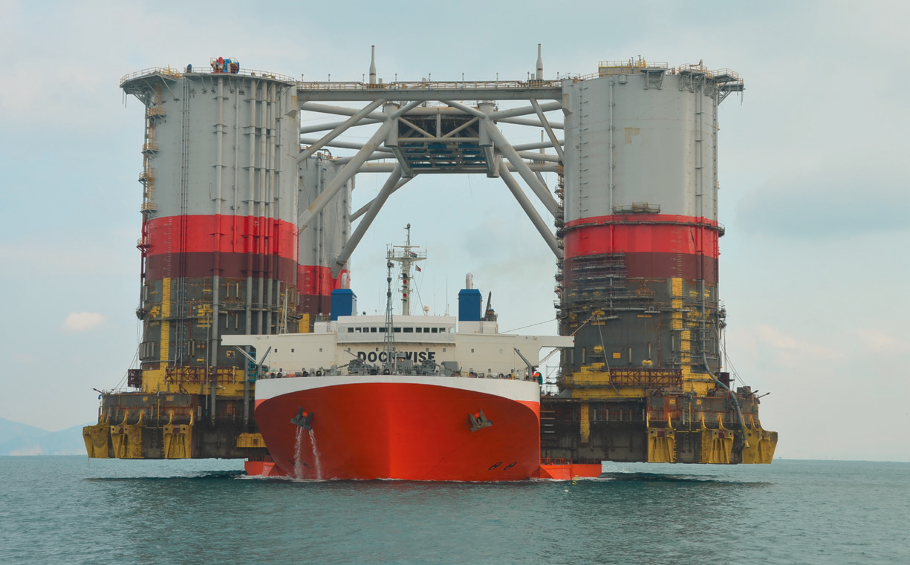
From Houston (BN): Gulf Island Fabrication’s Ingleside, Texas, yard has finished the 30,000-ton, 366-m tall platform for Walter Oil & Gas’ Coelacanth project.
The platform, which will be the third tallest free-standing platform in the Gulf of Mexico, awaits towing to its installation site in Ewing Bank Block 834.
There, Walter will reenter and complete a 2010 discovery well and plans to drill five more 60-day to 90-day wells through 2017, according to the development plan filed with regulators in 2013.
That plan called for platform installation to take 45 days and to occur between Sept. 1 and Oct. 15, so the project is close to being on schedule.
By the way, it is named for a species of fish once thought extinct but later found alive, which is sort of like bottom-standing deepwater platforms, the offshore facility type superseded by floaters but being revived by Coelacanth.
In other construction news, Anadarko has installed the topsides on its Heidelberg (SEN, 32/11) spar. In an Oct. 5 posting on Facebook, the company announced Heerema’s Thialf, the largest crane vessel in the world, lifted the 10,000-ton topsides onto the already-installed spar in 1,615 m in Green Canyon Block 859. The 80,000-bbl/d facility is expected to see first oil next year.
It is a twin of Anadarko’s Lucius (32/9) facility, which has been producing in Keathley Canyon Block 875 since January of this year.
Meanwhile, Chevron’s Big Foot (32/14) tension-leg platform is back in safe harbour where it was built, at Kiewit’s Ingleside, Texas, yard. There it will await future marching orders after a failed installation attempt last May.
The facility had been moved into position for installation in 1,600 m in Walker Ridge Block 29 about 360 km south of New Orleans when crews found that nine of 16 preinstalled anchoring tendons had lost buoyancy. So the installation was aborted.
Not until recently did Chevron confirm what became obvious in the weeks after the failed installation try—Big Foot would have to go back to Kiewit Ingleside for safe-keeping pending the next attempt. Startup of the $5 billion project, already late due to construction and installation delays, is not expected before sometime in 2016, if then.
Big Foot is a 2006 Miocene discovery and plans originally called for startup in mid-2014.
Recommended Reading
E&Ps Capitalize on AI Surge with NatGas Investments, But Volatility Expected
2024-11-15 - EOG, Diamondback and Gulfport Energy remain optimistic—despite recent near-term volatility—and are doubling down on natural gas investments in order to meet growing energy demands.
TXO Announces 3 Tcfe NatGas Potential in San Juan Basin
2025-01-16 - TXO Partners plans to exploit a 3,520-acre play as Phase 1 development in the Mancos Shale.
Predictions 2025: Downward Trend for Oil and Gas, Lots of Electricity
2025-01-07 - Prognostications abound for 2025, but no surprise: ample supplies are expected to keep fuel prices down and data centers will gobble up power.
Dallas Fed: Trump Can Cut Red Tape, but Raising Prices Trickier
2025-01-02 - U.S. oil and gas executives expect fewer regulatory headaches under Trump but some see oil prices sliding, according to the fourth-quarter Dallas Fed Energy Survey.
Baker Hughes: US Drillers Cut Oil, Gas Rigs for First Time in Four Weeks
2024-11-15 - U.S. energy firms this week cut the number of oil and natural gas rigs operating for the first time in four weeks.




